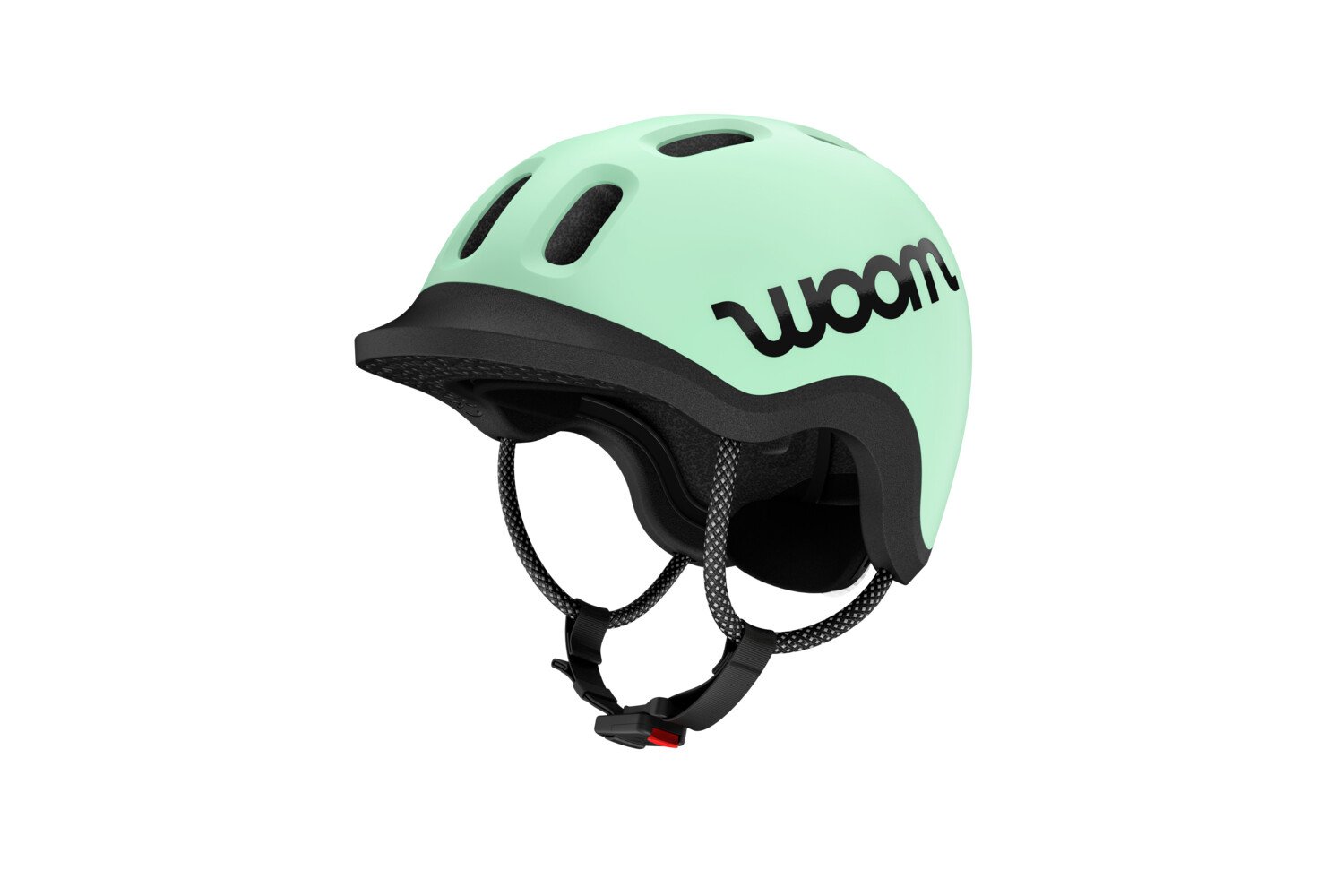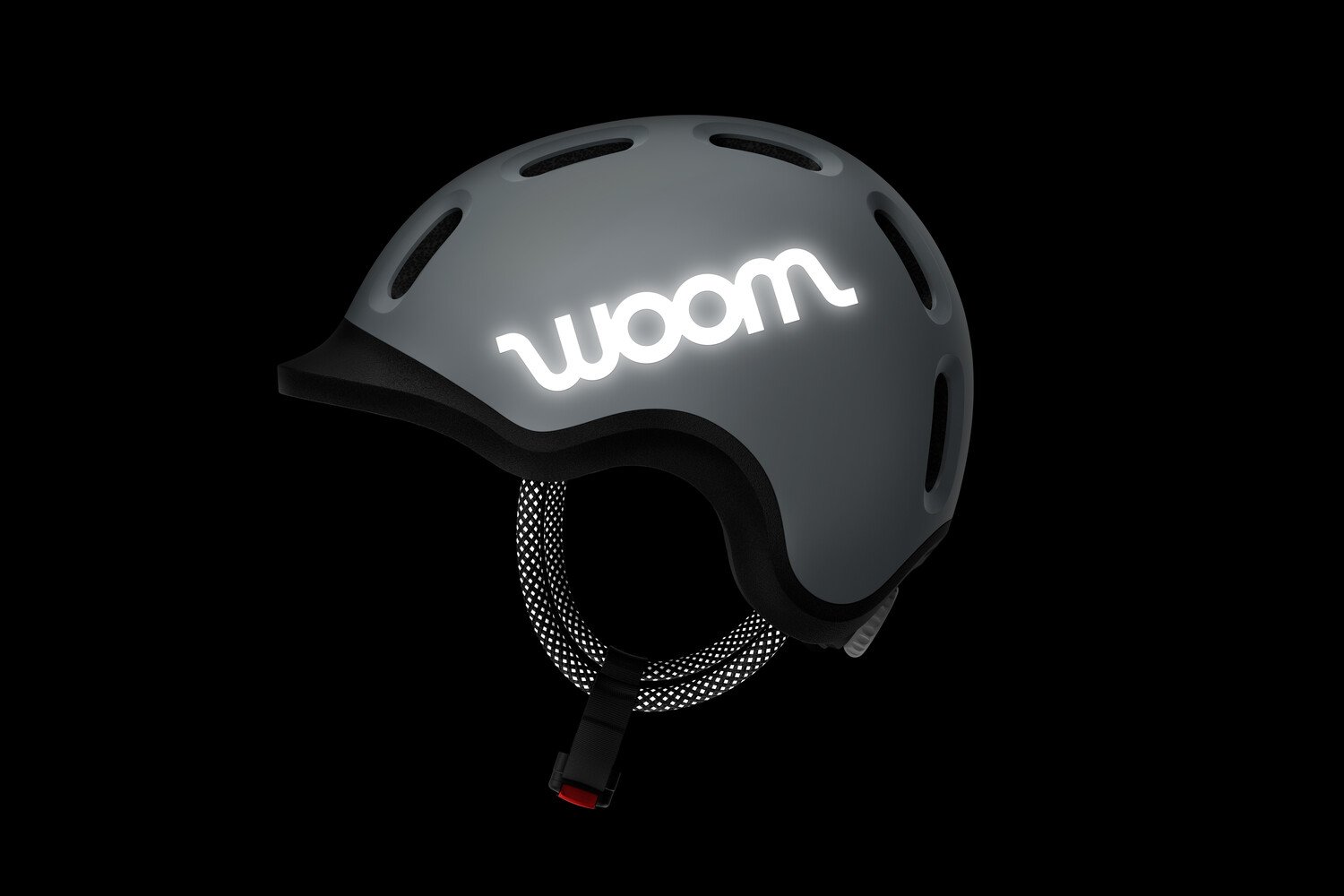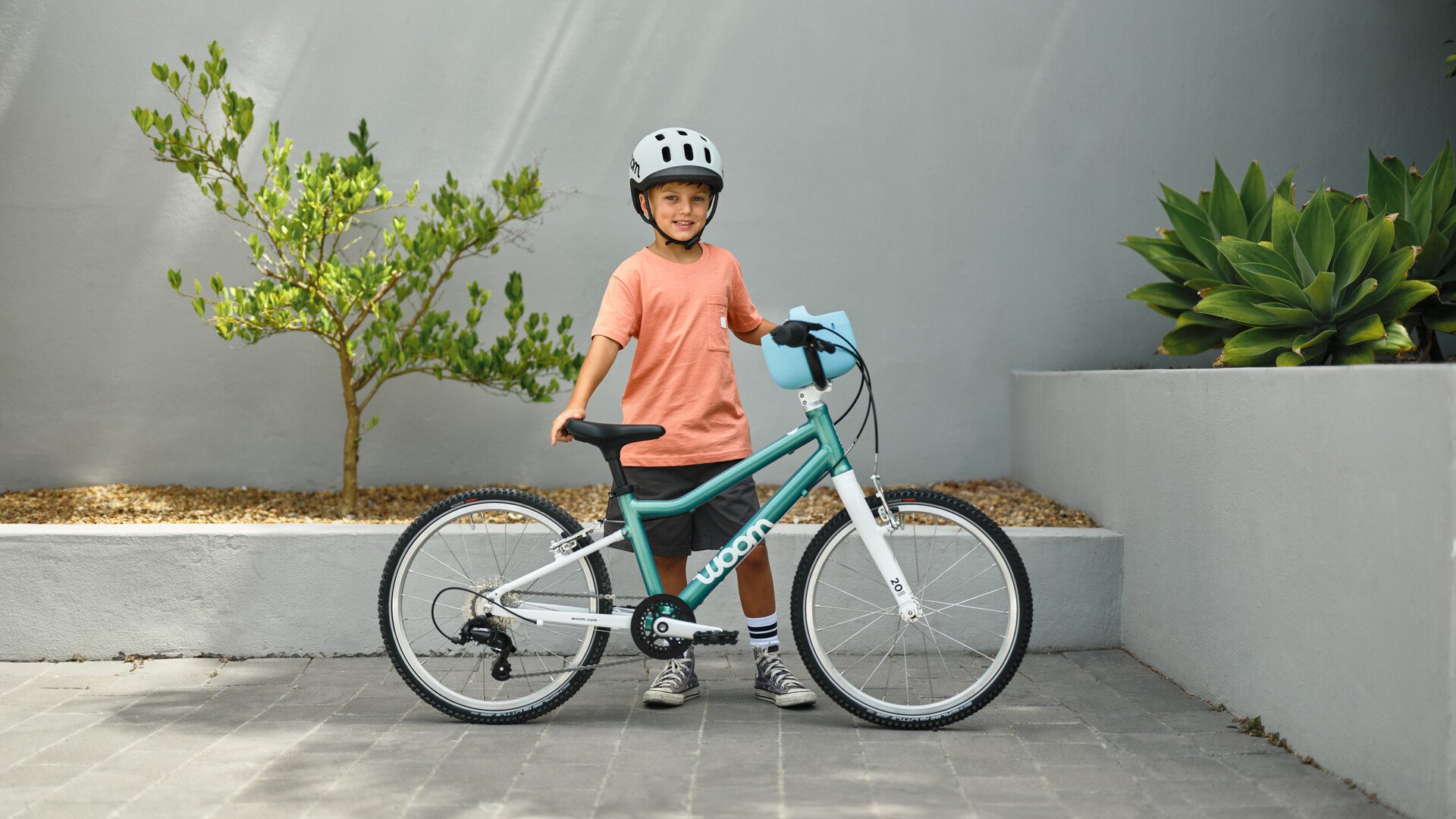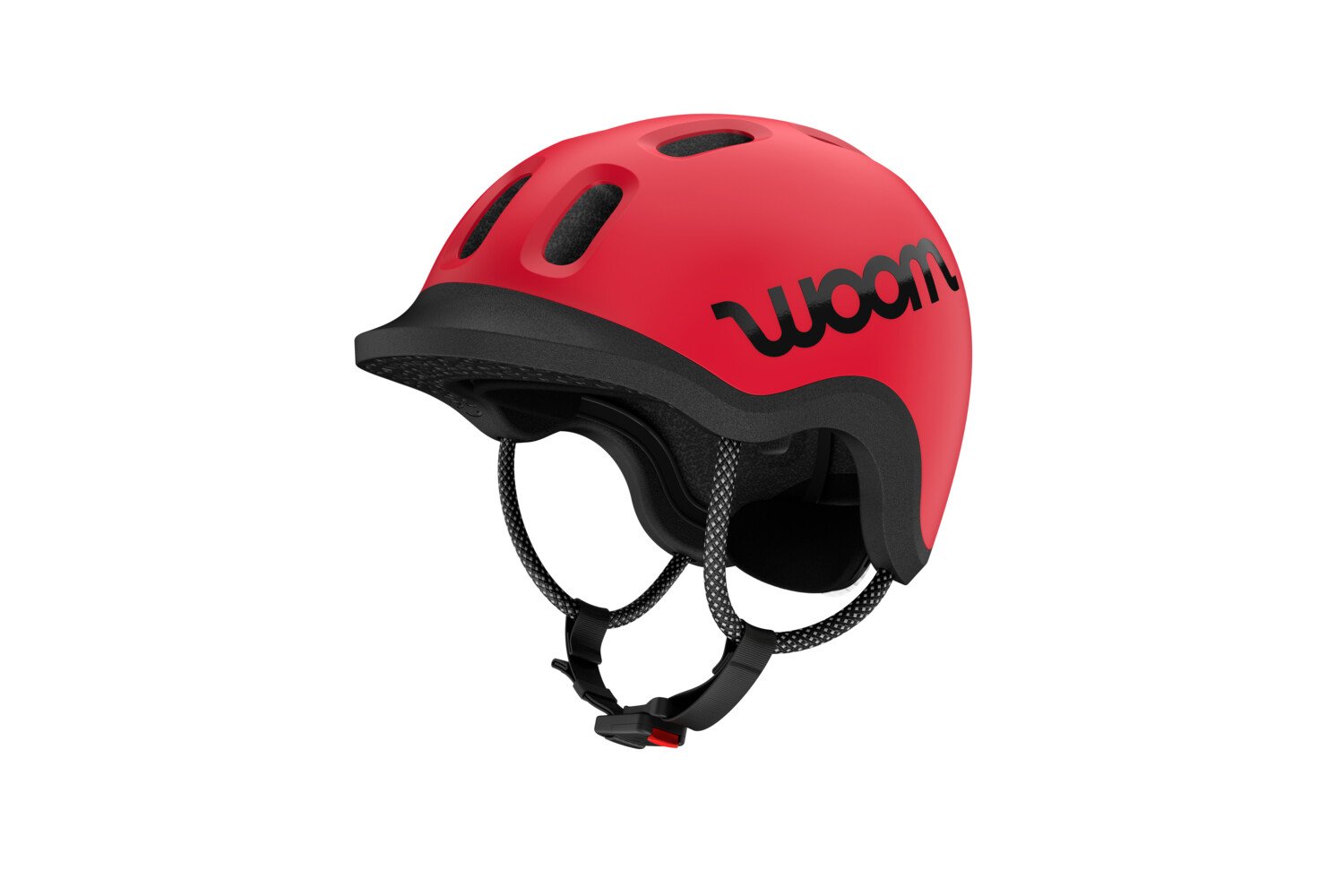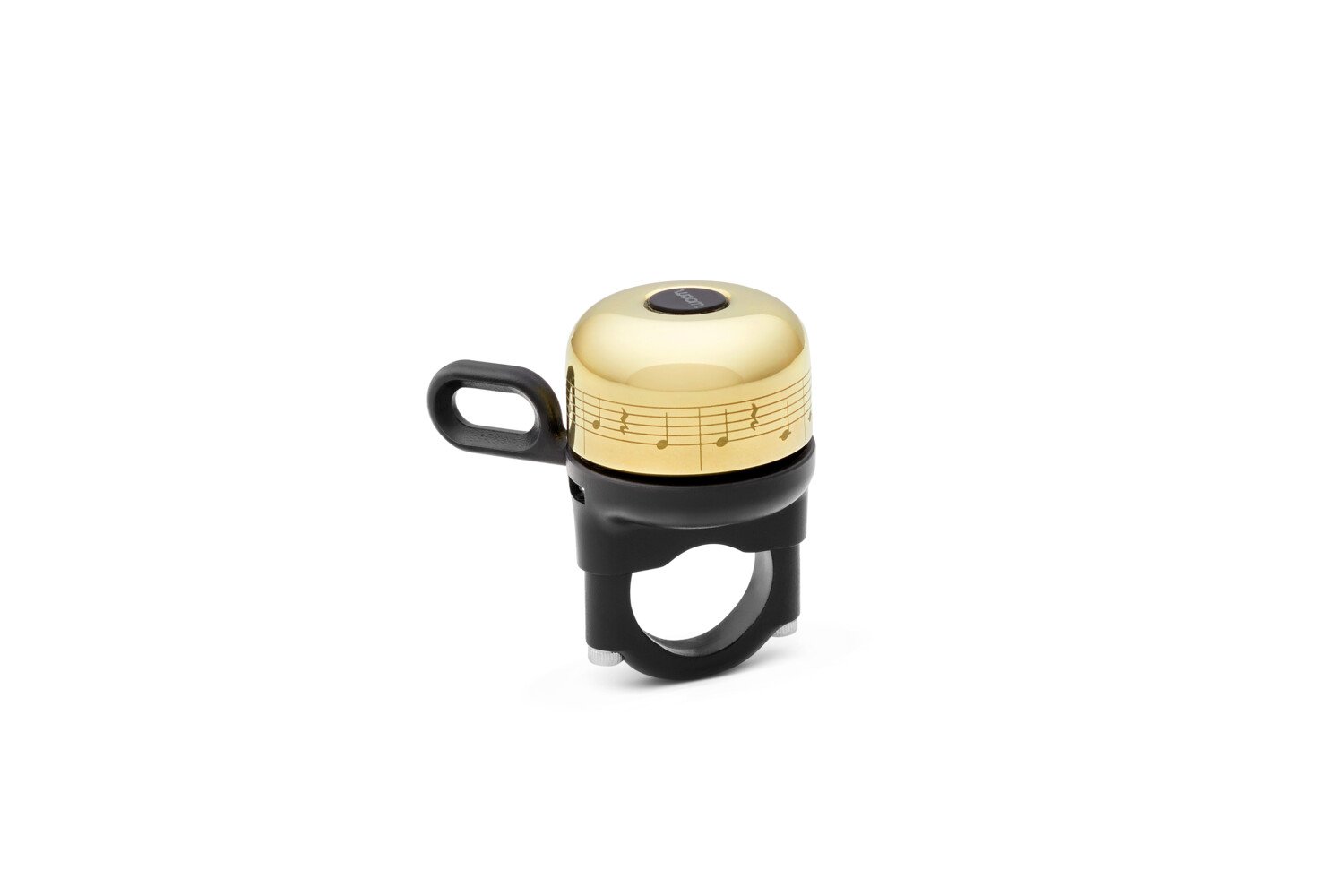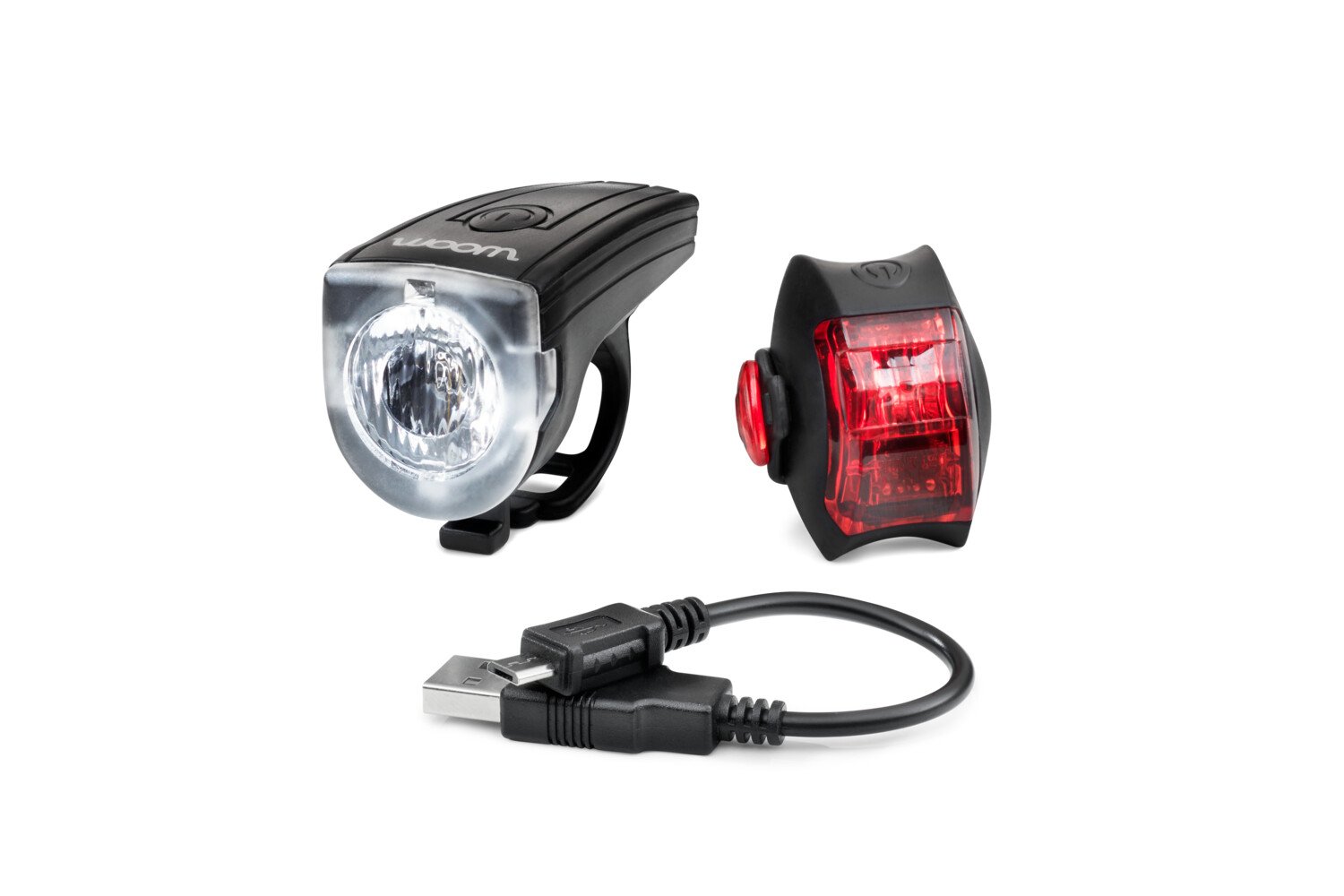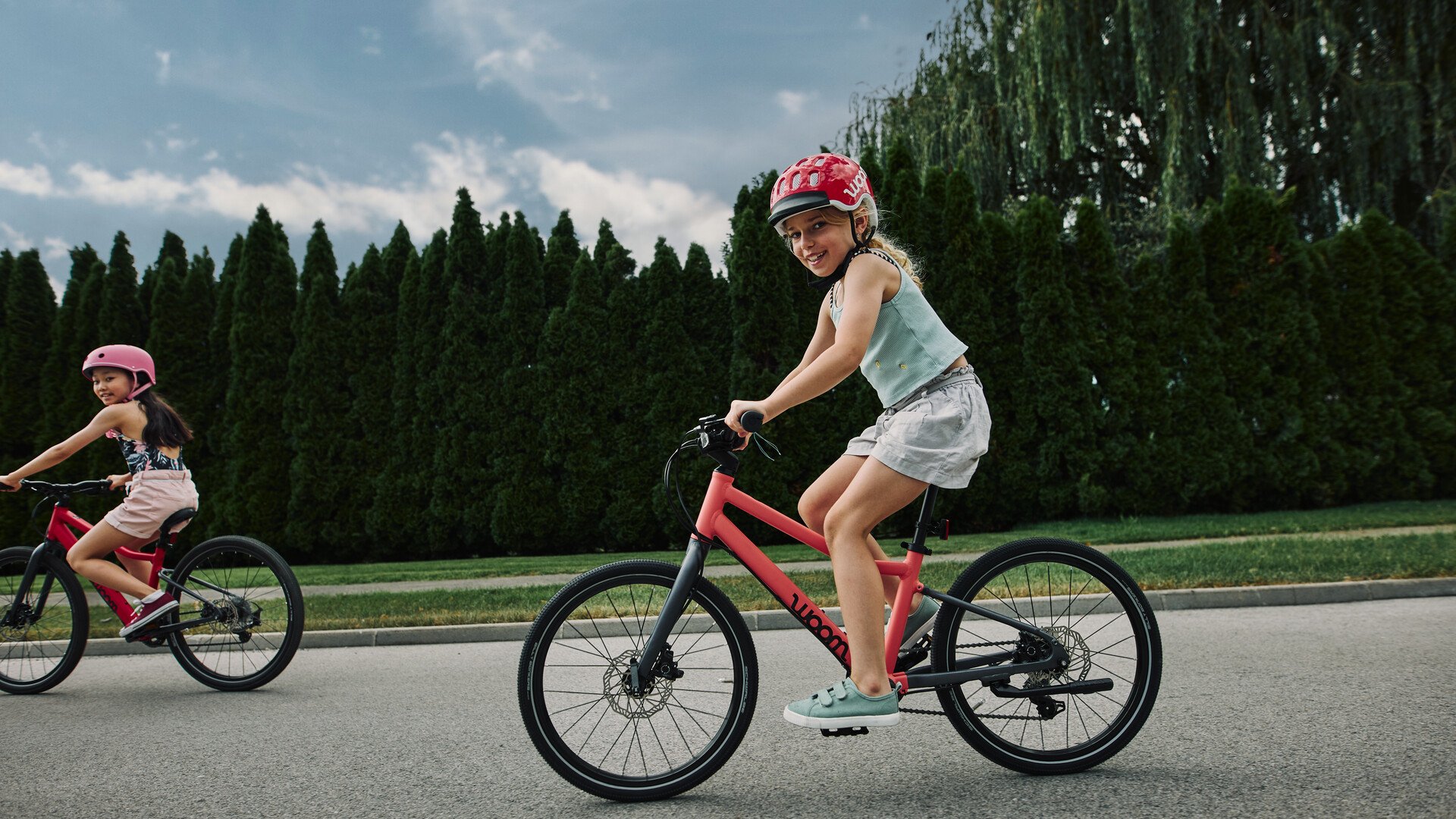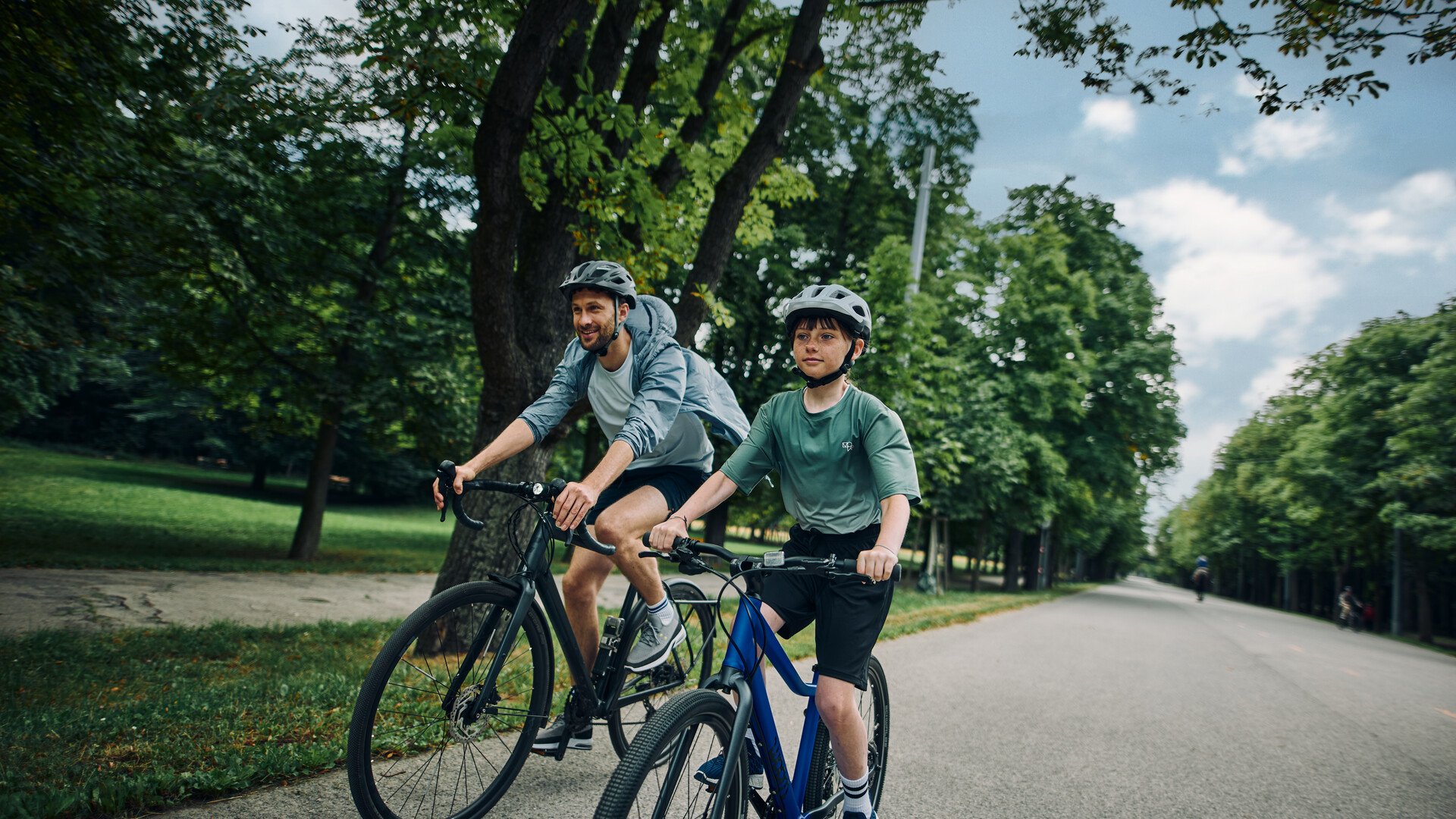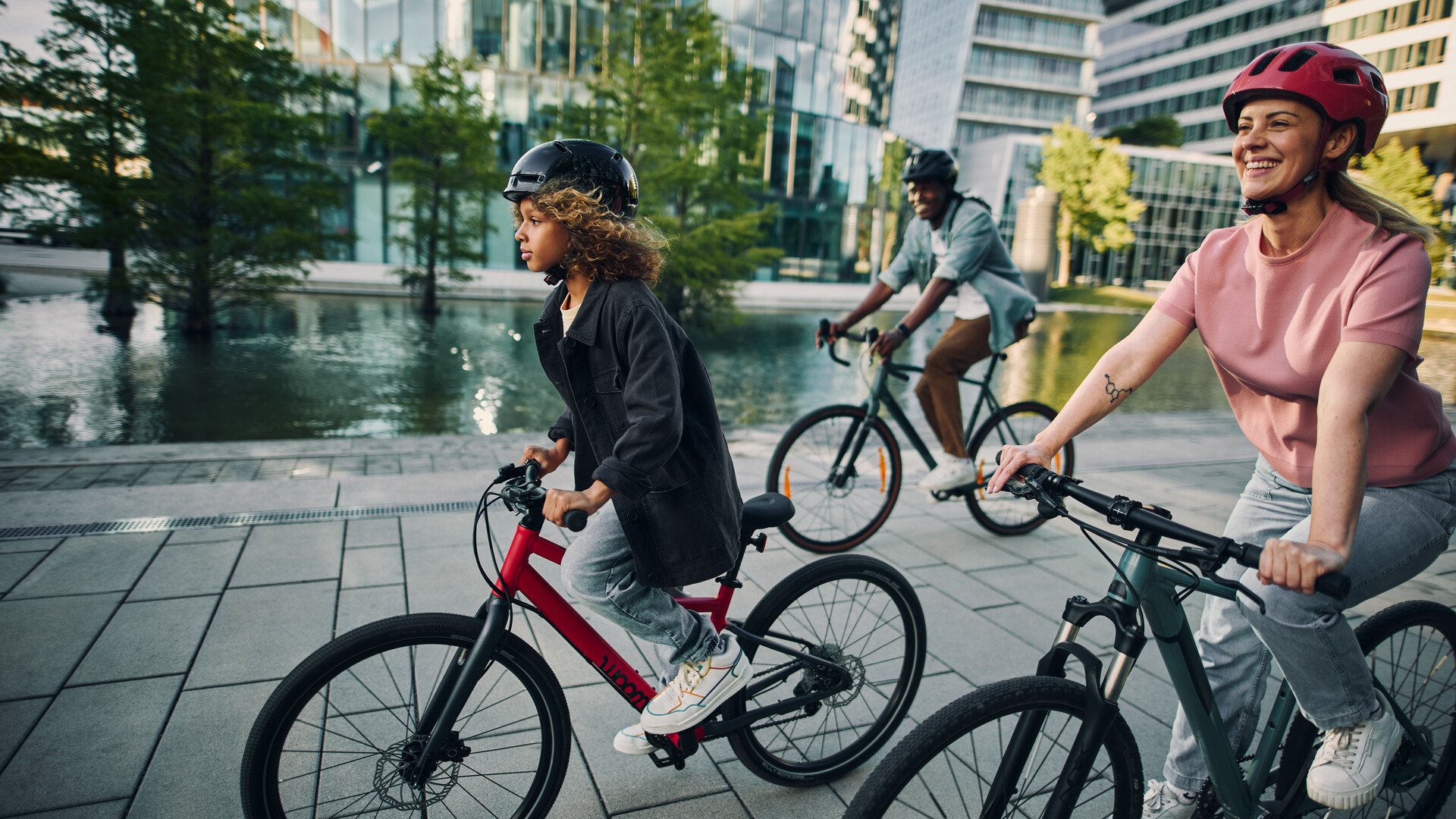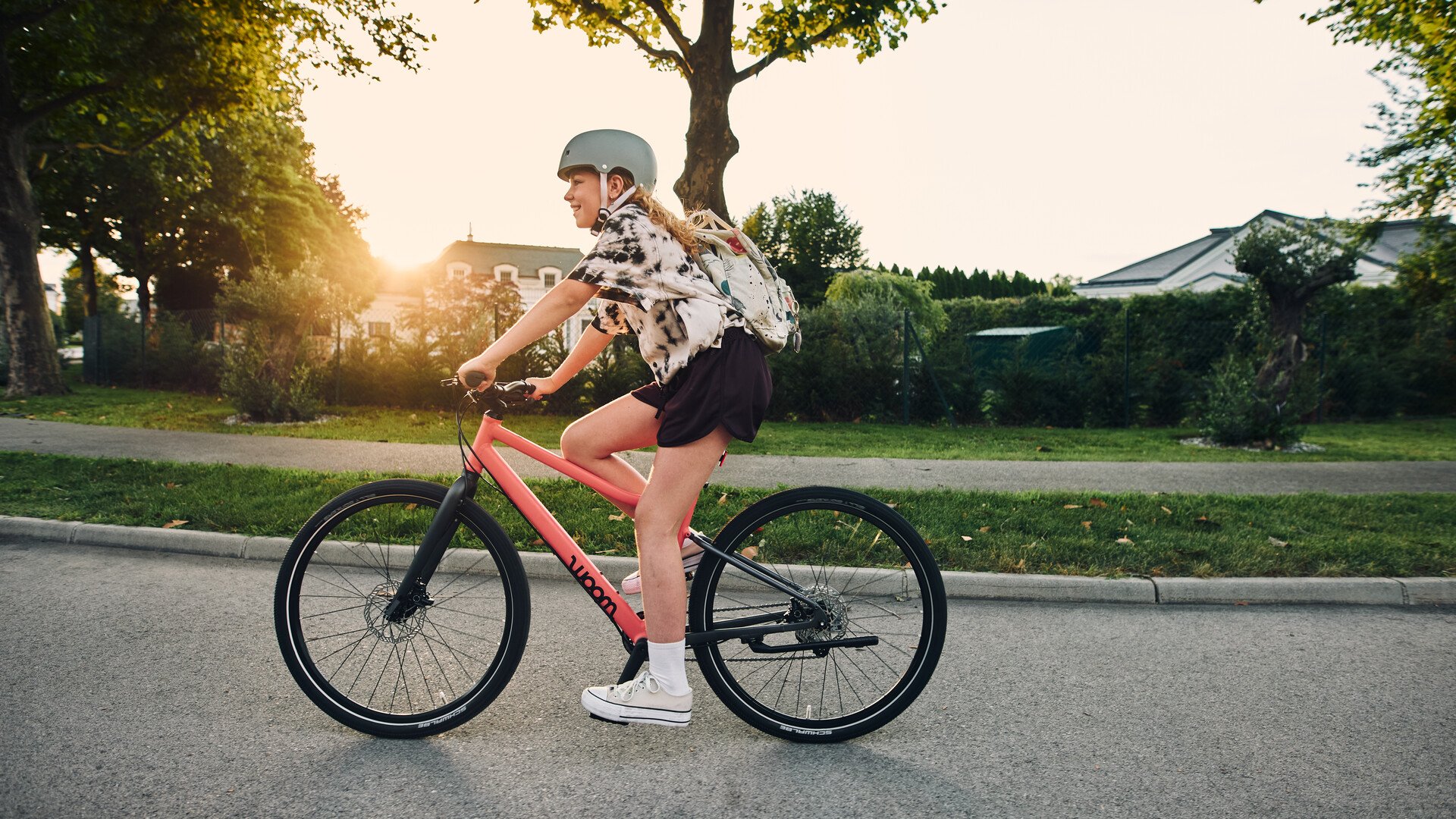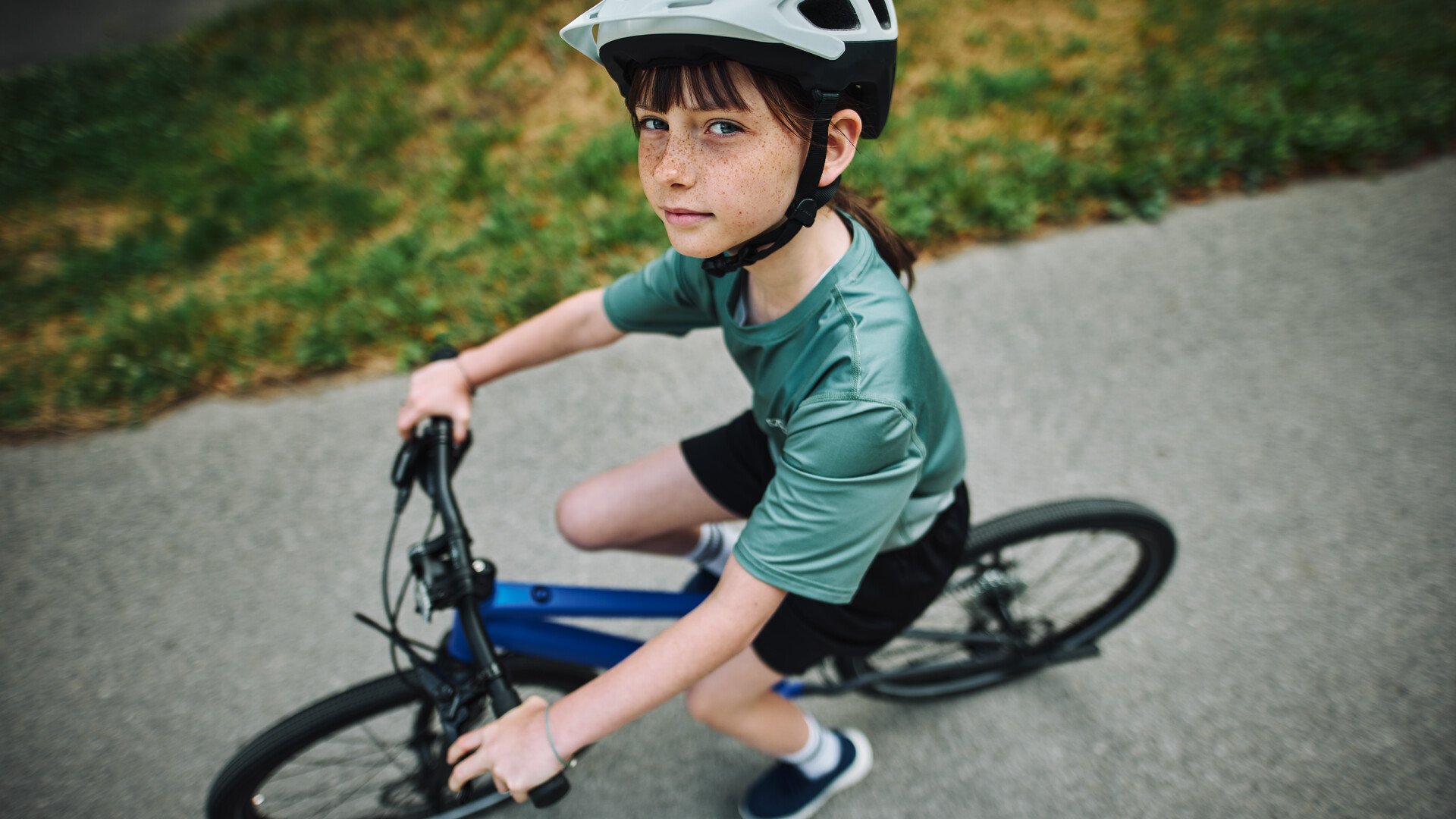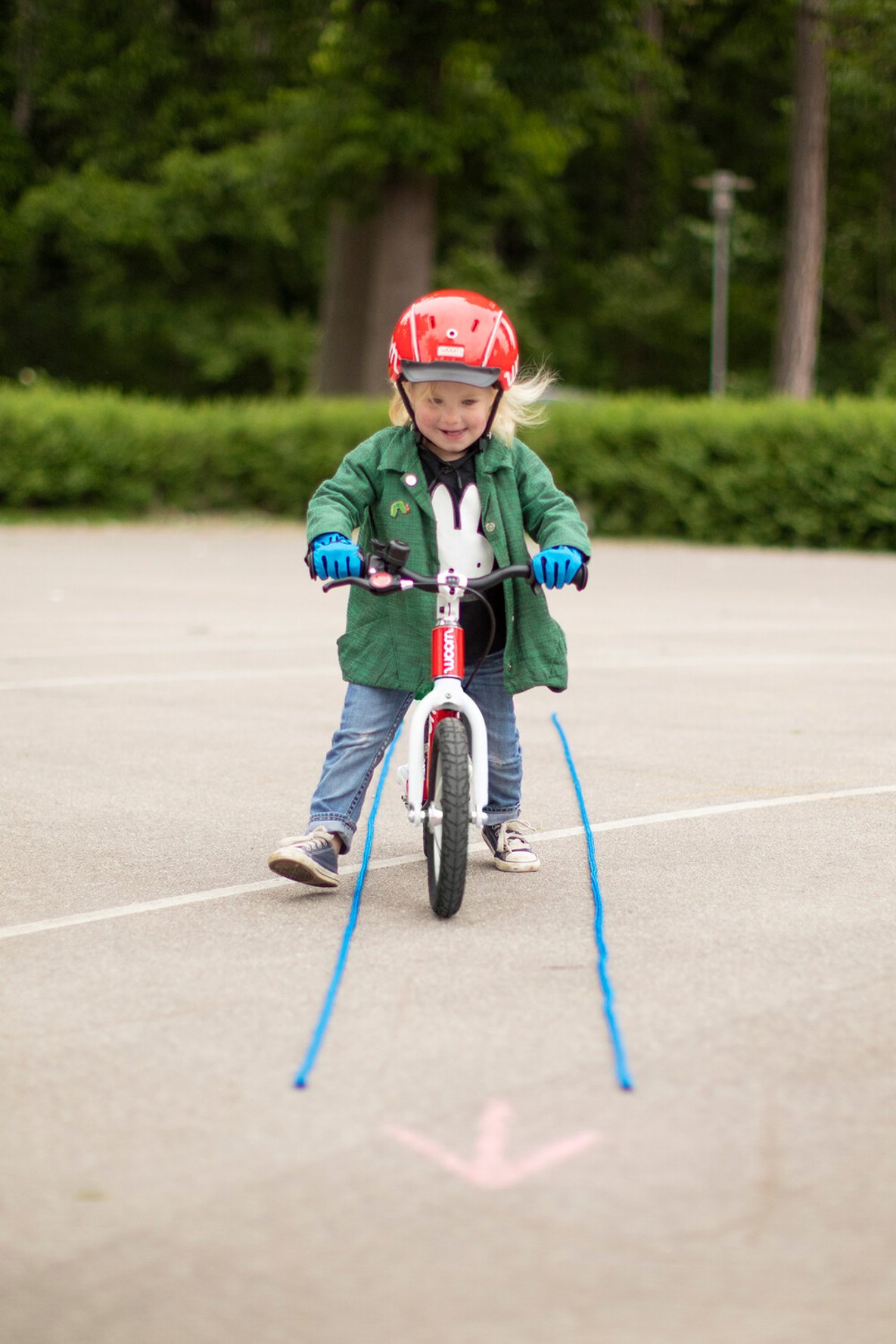Preparing your child for safe rides on the road
Relying on bikes as a mode of transport on the road involves plenty of preparation in order to stay safe.

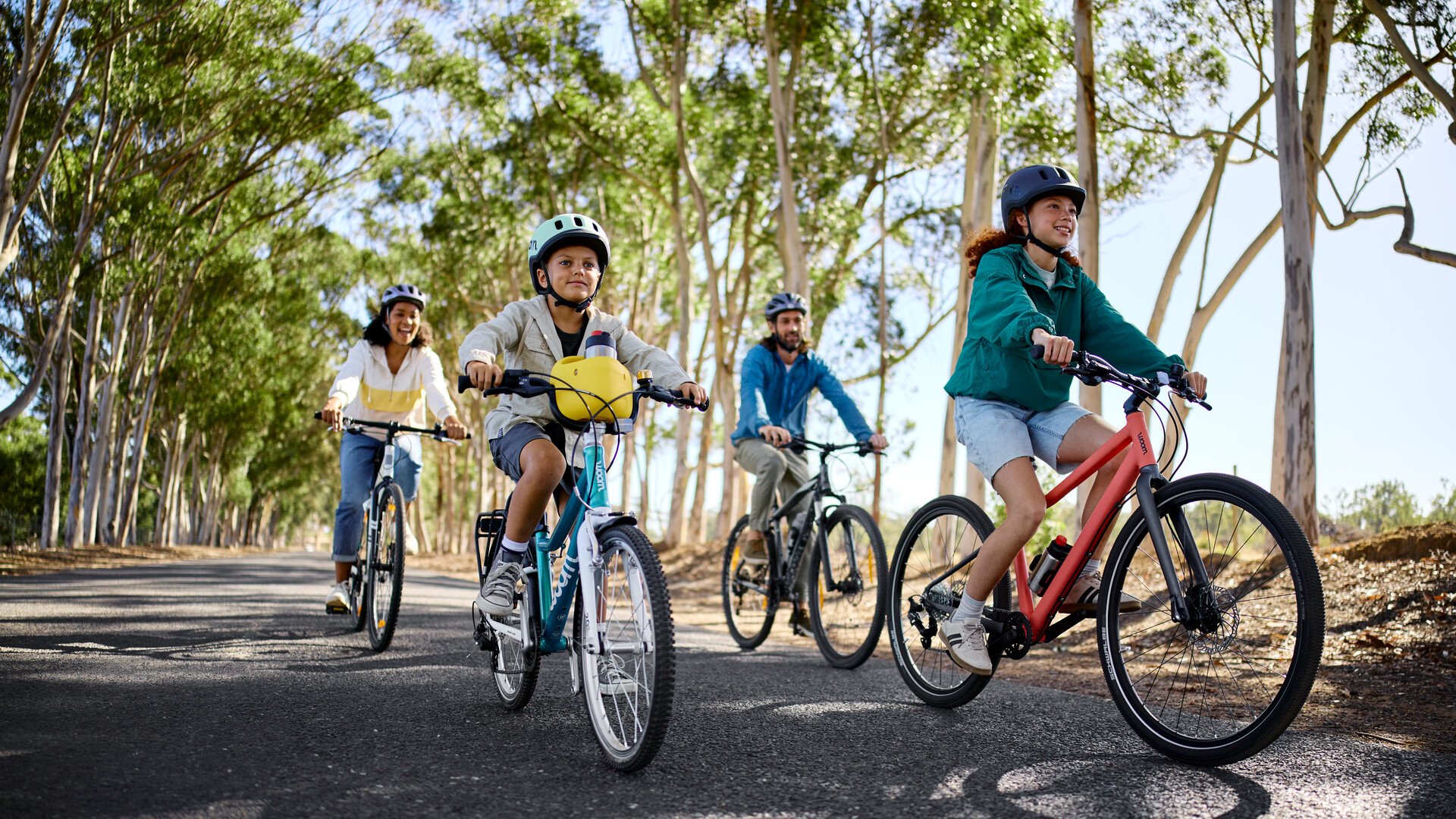
Are you toying with the idea of making bikes part of your family's daily routine? Maybe you're thinking of riding to school with your child for their first time? You've come to the right place!
Keep reading to find out...
- how to prepare your child and their bike so they stay safe when riding on the road,
- which potential hazards you need to make sure your child knows about, and
- how your child's perception of traffic may differ from your own.
1. Check key components and adjust the bike to your child
Make sure you adjust the saddle and handlebars so that your child has no trouble placing their feet on the ground or reaching the handlebars and brake levers with their hands.
You need to know that your child's bike is roadworthy, so we recommend giving it a >>safety check before they set off – especially if they're not out on their bike all that often.
- Are all the bolts and quick-releases done up tightly?
- Are the brakes and lights working?
- Do the tires have enough air?
Find out which parts of your child's bike need checking most regularly in our >>bike check article (complete with step-by-step video).
2. Equip your child and their bike for the road
Never let your child go out on their bike without their helmet on. Before they go, check that their helmet is securely fastened and sitting comfortably on their head.
Helmets are a legal requirement in some countries. Familiarize yourself with the legislation in force in the country where your child rides.
As children are smaller than adults and therefore sit lower on their bikes, it's important that they're as visible as possible while on the roads – brightly colored clothing helps here.
In addition to having bike lights as required by law, we also recommend adding safety reflectors to their helmet and clothing.
In many countries, bikes legally have to be fitted with a bell, which can provide your child with an easy way of drawing attention to themselves if needed.
Remind yourself of the traffic regulations that apply in your country. That'll tell you what constitutes a roadworthy bike, when (and in what circumstances) your child is permitted to ride unaccompanied on public roads, as well as many other useful things.
Looking to kit your child and their bike out with everything they need for a safe ride? Head over to our online shop and explore our full range of accessories.
To have as safe a ride as possible without the stress, familiarize your child with the rules of the road and the meaning of various hand signals and road signs. Want to go one step further? Teach them how to act in traffic and then help them practice the skills they need.
- Important road signs
Stop and right-of-way signs are the obvious ones that your child will soon recognize and understand. - Zebra crossings
Pedestrians have priority here. It's the responsibility of cyclists to slow down in time and stop to let people cross. - Obstacles
Your child needs to be able to avoid obstacles like roadworks and parked cars.
They need to be aware of oncoming traffic and leave plenty of space between them and whatever they're riding around. - Overtaking
When cycling on shared-use paths, your child should give pedestrians and slower riders plenty of space and overtake them when necessary.
So your child has the theory sorted, but now they need to put what they've learned into practice? Run through some fun drills with them to make sure it all sinks in. They'll enjoy this time you spend together and your child's safety on the roads will improve (and yours will too).
- Precision braking: Draw a mark on the floor where your child needs to stop their bike.
- Look both ways: Each time you reach a junction, your child needs to stop and shout "Look left, look right!"
- Over the shoulder: Hold an object up high as your child rides past you. They have to look over their shoulder, spot what you're holding up and shout it out to you.
- Spot the mistakes: Take turns playing each other's role – let them have a go at being the responsible adult who will watch you carefully and tell you what to do. Make a few deliberate mistakes that they can point out to you.
Make sure you're setting a good example by always following the rules of the road. When children are faced with new situations, it's important that they have a role model to watch and copy.
Your child should repeat these fun drills over and over again until it all becomes second nature to them.
Practice in a safe space that's away from traffic and free from distractions. Make sure you have plenty of space to play little games and set up a mini obstacle course. Courtyards, parks and pedestrianized roads are ideal.
Is your child loving the bike-based games? Check out >>this article for even more ideas for fun skills sessions. There's even a video to help you out with the safety training.
The answer to this really depends on where they're going to be riding and if it's a route that they're already familiar with.
- Dedicated bike paths of a decent width are ideal for riding alongside your child. But riding side-by-side isn't always permitted, so familiarize yourself with the legislation in force in the country where your child rides.
- If there happens to be two responsible adults on your ride, get your child to ride in the middle with one adult in front and one behind. Your child will take cues from the rider ahead of them, while the second adult will be able to keep an eye on the child from behind. If they're still building up their riding skills, having two adults is a big help.
- Riding alone with your child? Let them ride in front of you on familiar routes with you sticking close to their wheel so that you can advise them if necessary and make sure everything is going well. When riding on unfamiliar or busy roads, it's best if you ride in front.
When you're planning to ride on the road with your child, try to choose a route that is as safe and stress-free as possible for you both.
We'd recommend avoiding major junctions and roads that are prone to heavy traffic. It's always better to take a short detour on quiet streets and cycle paths if you can.
Go for a short and familiar journey as an introduction to riding a bike on the road – the school run is perfect.
Talking of the school run, check out our >>top tips for cycling to school safely right here.
Even with the best preparation, it's impossible to plan for every eventuality, so it's important that your child learns how to spot hazards and knows what to do when they come across them. There are some potential hazards that they need to be familiar with, such as...
- Junctions
Before crossing a junction, your child needs to be certain that it's safe for them to do so.
They should slow down and get close enough to assess the flow of traffic. Then they need to stop and let the flow of cars pass by. Their pedals should be positioned so it'll be easy for them to push off.
All clear? Okay, off they go.
Is your child riding in right-hand traffic?
They need to pay attention to vehicles turning right! They should never presume that drivers can see cyclists.
Make sure your child watches out for signs telling them that a driver intends to turn, such as flashing indicators and a reduction in speed. Teach them to stay where they are and give priority to other vehicles on the road if they are ever in any doubt. - Exits, entrances and driveways
Poor visibility is often an issue with exits and entrances, especially where children are concerned owing to their size.
Bear this in mind and remind your child to slow down as they approach an exit or entrance. They should look both ways to see if there's a vehicle on the move. If there is, they should make eye contact and be prepared to stop if necessary. If the coast is clear, your child can carry on pedaling. - Parked cars
Even parked cars can be a major hazard as you can never predict when a car door might be opened directly in front of a coming cyclist. Make sure that your child maintains a distance of at least a meter from parked cars whenever possible.
No riding through empty car parking spaces!
Your child could take drivers by surprise and may not have spotted cars approaching them from behind. It's best to practice riding in as straight a line as possible. - Pavement curbs
Riding too close to the edge could see your child clip their pedals against the curb. Make sure they leave a distance of around one meter between them and the pavement edge. - Blind spots
Every vehicle has a blind spot, meaning the driver won't be able to spot a cyclist from a certain angle. The bigger the vehicle, the bigger the blind spot.
To stay safe, your child needs to leave plenty of space between themselves and vehicles on the road. When they're at a junction or a set of traffic lights, they shouldn't stop alongside a vehicle on their right (in right-driving countries) or directly in front of a vehicle.
Teach them to stop behind the vehicle and leave a decent gap. - Tramlines
Avoid taking your child on routes that have limited space running parallel between the pavement curb or parked cars and tramlines.
Crossing tramlines takes some practice too – the safest bet is to cross them at a wide angle of 45–90 degrees.
Riding a bike on the road requires a few key skills – beyond safe handling – that kids develop over time as they gain more experience.
Never overestimate your child and remember that they will view the world around them differently to you and pay attention to different things to you depending on their age and stage of development...
- Line of sight
Children are smaller and seated in a lower position than adults, so your child's view won't be as clear as yours in many situations. Their vision is naturally more restricted. - Eyes and ears
Children can't judge distance and speed properly until they're nine years old. And even then, their field of vision is restricted until they hit the age of twelve.
So you can assume that your child will see a big car as being nearer than a small one and they won't be able to see a vehicle approaching at the side as well as you can.
What's more, children can't distinguish between sounds or identify potential dangers until they're at least seven years old. Before that point, your child will notice a loud car faster than a quiet one.
- Full focus
Children don't master the art of paying full attention to something until they are around six years old. But even then they are still easily distracted at that age. A dog walking past, for example, may cause them to lose focus.
By the time they're about eight years old, your child will be able to concentrate on one thing for longer, allowing them to focus on the entire bike ride to school, for example. - Logical thinking
Until they reach the age of around seven, children typically have an egocentric view of the world. This means that if they see a car, they assume that the driver must be able to see them. - Reaction time
A five-year-old's reaction time is about double that of an adult's. It's not until they hit puberty that their reaction time will start to catch up with an adult. - Awareness of danger
Your child won't be in a position to make rational decisions just yet. Basically, they'd pick the shorter route over the safer one.
From the age of around five, they'll start to develop a general sense of danger, but it'll be a good few years before your child really starts to anticipate potential risks.
And even then it'll take a while for them to be able to actually dodge dangerous situations and react to them appropriately.
